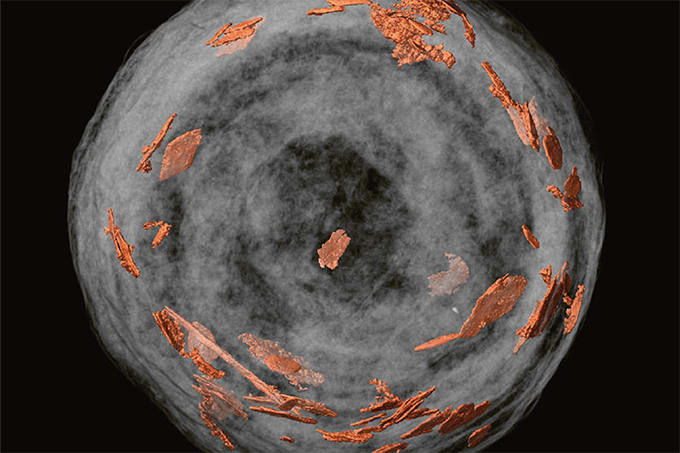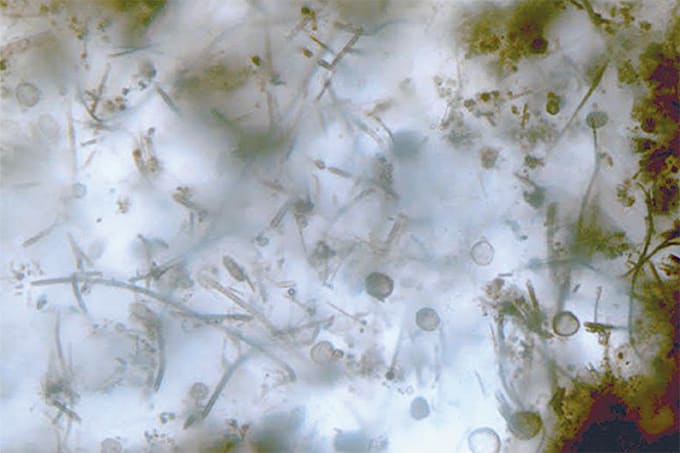Everyone’s a forensics expert – or so our viewing habits have led us to believe. On both the small and silver screens, DNA evidence has long been presented as the fulcrum on which a case balances – the final nail in the coffin of guilt. The result of this altered reality? Illogical or inadequate questioning from lawyers and unrealistic expectations from juries... Far from being the climactic clincher in murder trials, forensic science is complex and laborious – and is often put to use in far more prosaic settings than the criminal court. Certainly, for forensic specialists, the reality is far more grit than glamor, with work more likely being characterized by delays, frustration and contamination – an estimated 300,000 backlogged cases across the USA alone is cause for concern. With scope for improvement, is it time for analytical scientists to rise to the challenge? Christopher Palenik (Vice President and Senior Research Microscopist at Microtrace) and Glen Jackson (Professor of Forensic and Investigative Science at West Virginia University) talk about the methods and the myths in forensics – and the changing role of analytical science.
With an educational background at the University of Chicago and University of Michigan that spans chemistry, geology, materials science, and nuclear engineering, Chris’ formal education culminated in a PhD thesis focused on the world’s only naturally occurring nuclear reactor. This academic basis was counterbalanced by practical internships at the Bundeskriminalamt in Germany (the German Federal Police Crime Laboratory), the Internal Revenue Service National Forensic Laboratory, and a post-doctoral fellowship at the Federal Bureau of Investigation. Through this educational background, Chris developed an intimate familiarity with a wide range of materials and microanalytical approaches. Following his formal education, Chris has had the fortunate opportunity to continually expand his knowledge while applying it to a wide variety of unusual investigations. With projects that have included capital punishment cases, military court martials, and civil litigation and clients from pharma, food, environmental and nanotechnology industries, he has encountered a range of scientifically fascinating and newsworthy cases. Some of the more unusual samples have included a holocaust era lamp shade allegedly made of human skin, baseball bats and balls signed by the likes of Joe DiMaggio and Shoeless Joe Jackson, materials from unlicensed cosmetic surgeries, and a wide assortment of alleged pills, animal parts, and other miscellanea allegedly encountered during the consumption of food. The application of microscopy to a variety of unusual questions through a rigorous application of the scientific method provides an elegant link among this seemingly disparate ranges of clients, materials, and fundamental sciences. The outcomes of these investigations have been accepted in courts, published in peer reviewed journals, presented at meetings, and featured in media ranging from the National Geographic channel to NBC’s Today show. Chris is a fellow of the American Academy of Forensic Sciences, and serves in appointed positions on the North Carolina Forensic Science Laboratory Advisory board and the National Institute of Justice Forensic Science Standards Organization (OSAC).
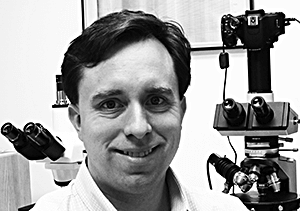
Effectively growing up within the discipline of forensic science, I’ve been able to watch it from a relatively unique perspective. Some of my earliest memories involve sitting with my father in his microscopy laboratory in our family’s basement, watching him work and hearing him talk about cases, instruments and the elegance of scientific problem solving. As a child, we had scientists from around the world sleep over at our home as they passed through in the course of their business. Visitors included detectives, lab directors, and scientists from Scotland Yard, the USSR and Germany. The dinner conversations were very often amazing. I remember hearing the late Robin Keely of Scotland Yard discussing how he analyzed an entire handgun in an scanning electron microscope (SEM). Since those early days, much of my education and many of my summers were focused on pursuing this path. I’ve always enjoyed pure scientific research, but by the end of graduate school I knew that I wanted to work on questions of a more applied nature. At Microtrace, we work on a wide range of interesting and unusual questions, ranging from art and antiquities to capital murder cases. Our projects are often topical, many are high profile, and (to my enjoyment) many require some aspect of scientific research.
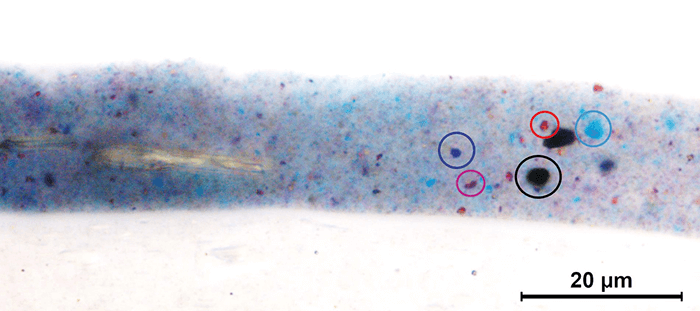
The “protocolizing” problem
There is a lot of good work being done both by researchers and practitioners to advance the capabilities of science in forensic disciplines. As a discipline, the most significant changes taking place in our country are the setting of national guidelines and standards both for laboratories and the practice of forensic science, and great efforts are being placed into ensuring that the significance and interpretation of results are maximized while at the same time remaining firmly rooted in science. What concerns me is that the process of standardizing and “protocolizing” is attempting to fit everything into a step-by-step process. For some types of analyses, such as drugs and DNA, where each sample is processed similarly, this works well. Crime labs are best equipped to deal with the routine, and – for the most part – they do a good job. Unfortunately, these standardized approaches can begin to break down in more complex cases, such as those involving the synthesis of disparate items of physical evidence or evidence that is presented without comparison samples. Trace evidence is a discipline that can encounter literally anything, from dust to pollen to building materials to nanoparticles – and many of these materials are encountered only sporadically. Indeed, the full suite of materials that may be encountered makes a “standard” analysis impossible, and the application of less thoughtful approaches can reduce significance or lead to unsupported conclusions. Many investigations would benefit from a generalist forensic overview to direct and synthesize results in more complex investigations.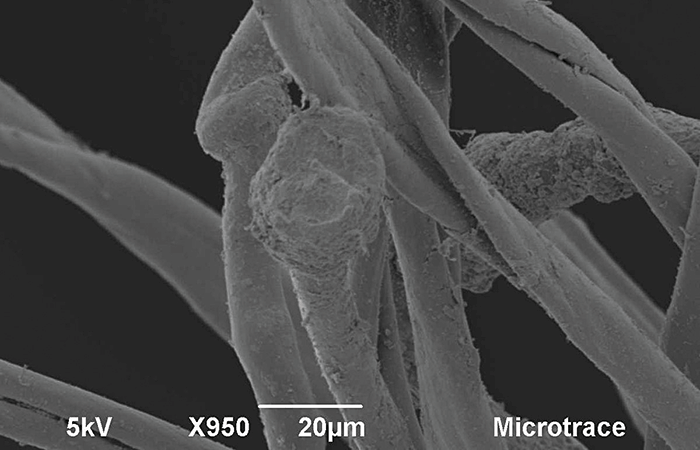
“So many of the most cited historical forensic successes have hinged on the clever and often elegant application of science to an unusual set of circumstances.”
For me, the most interesting changes in the field involve analyzing these unusual samples and conducting research in new areas applicable to forensic science. The majority of trace evidence analysis is conducted by a handful of techniques that include light microscopy, SEM/EDS, and FTIR spectroscopy. The instruments utilized are wholly capable of proving a great deal of information; however, there is almost always room to improve the quality and extent of information provided through better sample preparation and more detailed analysis and higher level interpretation. You may notice that these areas of improvement center around the ability of the analyst more than the instruments and standardized method – and they are not unique to forensic applications. Similarly, the life span of most trace evidence laboratory equipment is dictated more by the age of the attached computer than by technology improvements or failure of the instruments themselves. Due to budget constraints, many labs do not have concrete plans for updates and replacements of instruments. To that end, our laboratory at Microtrace was founded with the goal of providing a resource for those seeking answers to difficult problems that can be approached through the thoughtful application of scientific methods of investigation. We have been providing scientific assistance in criminal, civil and industrial forensic investigations for over 20 years, with analytical services that are utilized by prosecutors, defense attorneys, police, forensic laboratories, and the news media. Our analytical expertise in the identification of single small particles and traces of microscopic evidence permit us to exploit remnants of almost anything that might be left at a crime scene or carried away from it.
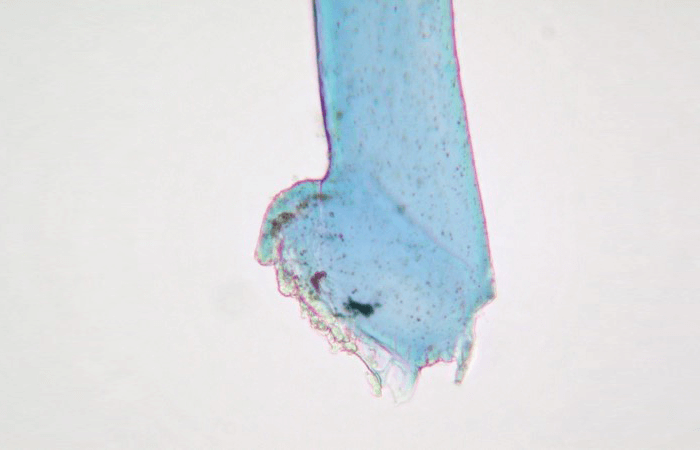
Pushing the right buttons?
Forensic practitioners come from a wide range of training and educational backgrounds. While many forensic scientists originate from traditional scientific programs (for example, chemistry, biology, geology), the rise of specialized forensic programs has resulted in more and more scientists with specialized training in forensic science. Depending on the program, this can be good or bad. In some cases, the forensic training is heavily based in the fundamental sciences, so students end up with a fundamental background in not only the forensic application of analytical methods but also their theory. There are also programs that are much more applied, which can result in graduates who know how to “press the right buttons” (so to speak), but don’t have a strong understanding of the theory behind these instruments or the properties of the materials that they encounter. The latter situation can make students appealing job candidates, since they already know how to use common instruments; however, such limitations inevitably show up as weaknesses either in the course of daily work or in court testimony. I certainly think that forensic science is often seen as a more relevant and accessible science than traditional sciences, such as chemistry or physics. I’m pretty certain this is, in part, due to the popularity of the discipline with the media and its seemingly more direct applicability to topical issues. The positive upshot is that few forensic science programs have difficulties drawing students. But the counterpoint is that many students come into the program more fascinated by the social aspects of the discipline than the technical and scientific efforts required to obtain this information... If anything needs to be improved in analytical forensics, it’s the right kind of thinking. So many of the most cited historical forensic successes have hinged on the clever and often elegant application of science to an unusual set of circumstances. As long as humans are involved in the process of analysis, there is room for creativity in the application of the scientific method at the bench level. Unfortunately, quality systems in laboratories tend to discourage this type of creativity, because deviations from protocols require additional effort on the part of both the analyst and supervisor – both of whom are generally already backlogged...Glen Jackson is the Ming Hsieh Distinguished Professor of Forensic and Investigative Science at West Virginia University. He is also co-editor in chief of the newly-launched Elsevier journal “Forensic Chemistry”, a fast, high-impact journal devoted to all basic and applied areas of forensic chemistry. He also holds appointments in Biology and the C. Eugene Bennett Department of Chemistry. Before moving to WVU, he was an Associate Professor of Chemistry and Director of the Forensic Chemistry Program at Ohio University. Dr. Jackson is the author or co-author on two patents, more than 55 publications, and more than 100 presentations. Jackson is currently the chair of the Forensic and Security Interest Group at ASMS and recently served as Program chair for the 2015 ASMS Sanibel conference on Forensic and Security Applications of Mass Spectrometry and SciX Conference 2015. He is a member of the NIST OSAC subcommittee on Seized Drugs, teaches several forensic-related mass spectrometry workshops each year and is an active forensic chemistry consultant.

Like most academic researchers, my responsibilities include teaching, research and service. In research, my goal is to try to advance the capabilities of forensic science – and bioanalytical chemistry – through the development of novel instrumentation. More specifically, the instruments and capabilities we develop are related to mass spectrometry. I have mixed feelings about how well analytical chemistry is helping the practice of forensic science. On the one hand, there are plenty of examples of amazing capabilities being developed in a wide variety of analytical disciplines. On the other hand, the conservative nature of forensic science generally discourages the adoption of new technologies. Because of its cautious nature and disconnect with advances in academia, forensic science practice struggles to benefit from exciting new developments the way that other disciplines do.
How to battle the backlog
Crime labs are having a difficult time trying to keep up with the challenging demands of modern seized drugs, which often contain novel synthetic psychoactive compounds like cannabinoids and bath salts (cathinones). Labs are struggling to identify the exact isomeric nature of these new psychoactive substances, and struggling to meet legal demands like structural or functional analogs of existing controlled substances. In other areas, it will be interesting to see if the establishment of the NIST OSAC organization and their standards leads to any notable changes or improvement in the practice of forensic science. I’ve been serving on the seized drug subcommittee of OSAC throughout 2015 and my colleagues and I are uncertain as to what will become of our effort. Will the standards be required or legally enforceable or simply used as optional guidance, like the current SWGDRUG guidelines?GC-MS and FTIR spectroscopy are the bread and butter of most forensic labs, and SWGDRUG guidelines virtually require the use of one or both when confirming the identity of drugs. As noted, there are an increasing number of drug seizures involving novel psychoactive substances in which GC-MS and FTIR may only narrow the identity to two or four isomers of a drug. In such cases, chiral chromatography (GC or LC) or GC-IR/LC-IR will be necessary to reach isomer differentiation. I’m still amazed that fast-GC has never caught on the way I thought it would. Labs complain a lot about backlogs, but they could easily purchase a narrow-bore capillary column for their existing GCs and halve the time for their separations, without any loss in chromatographic performance. For unknown reasons, fast-GC just never caught on...
The CSI effect(s)
My colleagues and I have written before about the so-called “CSI effect”. Two important factors about “the CSI effect” are that: i) there are actually many different effects, not just one; and ii) the effects of legal and forensic dramas started well before CSI first aired in 2000. For example, applicants to forensic science BS degree programs accelerated in the early 1990s when X-files and Law and Order were new and very popular. However, it is also true that the number of universities offering degrees in forensic science certainly has correlated with the popularity of the CSI series, and there are now many forensic science programs in each state. Forensic dramas like CSI have done an excellent job at turning students on to STEM degrees like forensic science, pathology, anthropology and entomology. Most students understand the differences between reality and fiction, but there’s always a minority of students with unrealistic expectations of themselves and the limits of science. (Unrealistic expectations by the public are another example of the CSI effect.) Graduates from our programs (BS or MS in Forensic and Investigative Science at WVU) report satisfactory job placements or continued educational advancement, so we’re comfortable with continuing to educate students in these majors. Plus, they are actually employable in a variety of industries, so we’re comfortable with their employment opportunities. Generally speaking, criminalists and forensic chemists are well prepared for their casework. Graduates from FEPAC-accredited programs are generally well-rounded scientists, especially if they have a master’s degree in addition to their bachelor’s degree. I would say that there is currently a significant absence of expertise in method development and method validation in the workforce; the lack of experience stems from the fact that, until very recently, there were virtually no forensic science PhD programs to foster rigorous scientific experimentation skills.“Forensimetrics” and the future
There is a lot of confusion in the forensic community about uncertainty of measurements. Many practitioners think that qualitative measurements – like drug identifications – cannot be reported with an error because there are no numerical answers. However, this opinion ignores the fact that qualitative determinations are not perfect and therefore must have some uncertainty. Although error reporting for quantitative measurements is quite well understood by practitioners, there is simply no agreement on how or whether to report errors for qualitative determinations. It would be great if the NIST OSACS could provide guidance on such error reporting, but that’s not likely to happen any time soon. Most analysts are not really challenged scientifically when testifying. It is simply not realistic to expect defense lawyers to challenge an expert witnesses about their knowledge of fundamental concepts in chromatography, mass spectrometry or FTIR. However, defense lawyers are becoming more educated in cross-examining expert witnesses, and I’m sure we will soon see examples of inadequate and embarrassing testimony by analysts about instrumental methods of analysis. (see Making a Murderer from last month’s issue: tas.txp.to/0316/MAM) Right now, we’re in an exciting position – at the birth of forensic informatics or “forensimetrics”. I honestly think that by solving problems within their own discipline, forensic scientists could provide solutions with equally profound applications in other disciplines. When you think about it, all science is evidence based because we experiment with the world around us. Forensic scientists are becoming very proficient at using Bayesian networks to combine and weight complicated and seemingly unrelated evidence to compare one hypothesis with another. Almost every other discipline that depends on scientific evidence to make inferences about a sample could benefit from this sophisticated understanding. It is but one example of how forensic science could establish itself as a core scientific discipline with the ability to help elevate the other sciences – instead of just borrowing techniques.In the discipline of trace evidence, the National Institute of Justice supports a variety of applied forensic research aimed at expanding the scope of the discipline. Some of the research focused around more difficult types of evidence, such as sand and soil, colorants (pigments in paint and dyes in fabrics), and nanoscale evidence. The techniques supporting this research rely on relatively new (to the forensic field) instruments, such as Raman microspectroscopy and higher-resolution electron microscopy, as well as the automation of these methods. For example, pigments and dyes are responsible for the color of nearly every item on and around you. Yet these colorants are present typically at levels of about 1 percent, which has made them traditionally very difficult to analyze. The maturity of confocal Raman microspectroscopy as a robust, bench-level method, provided the first means by which pigments could be analytically identified on a reliable basis. With the assistance of an NIJ grant, we have had the opportunity to systematically study a large population of pigments and dyes, which has resulted in a foundation that permits scientists to identify these pigments in a practical manner. We have successfully applied this pigment identification to casework and utilize it on a regular basis. Other labs that are beginning to acquire Raman microscopes will have the ability to implement this approach as well; however, new approaches can take years or decades to develop into a mature technology that is ready for broad adaptation. A panel at the 2016 American Academy of Forensic Sciences on “Transitioning new technologies,” characterized the challenges that exist from research through discipline wide adaptation. Despite the challenges, the ultimate goal of forensic research is to provide new types of data – and more data – that can be used to improve the significance of evidence and provide better constraints on the uncertainties of results, while providing more efficient analyses.

